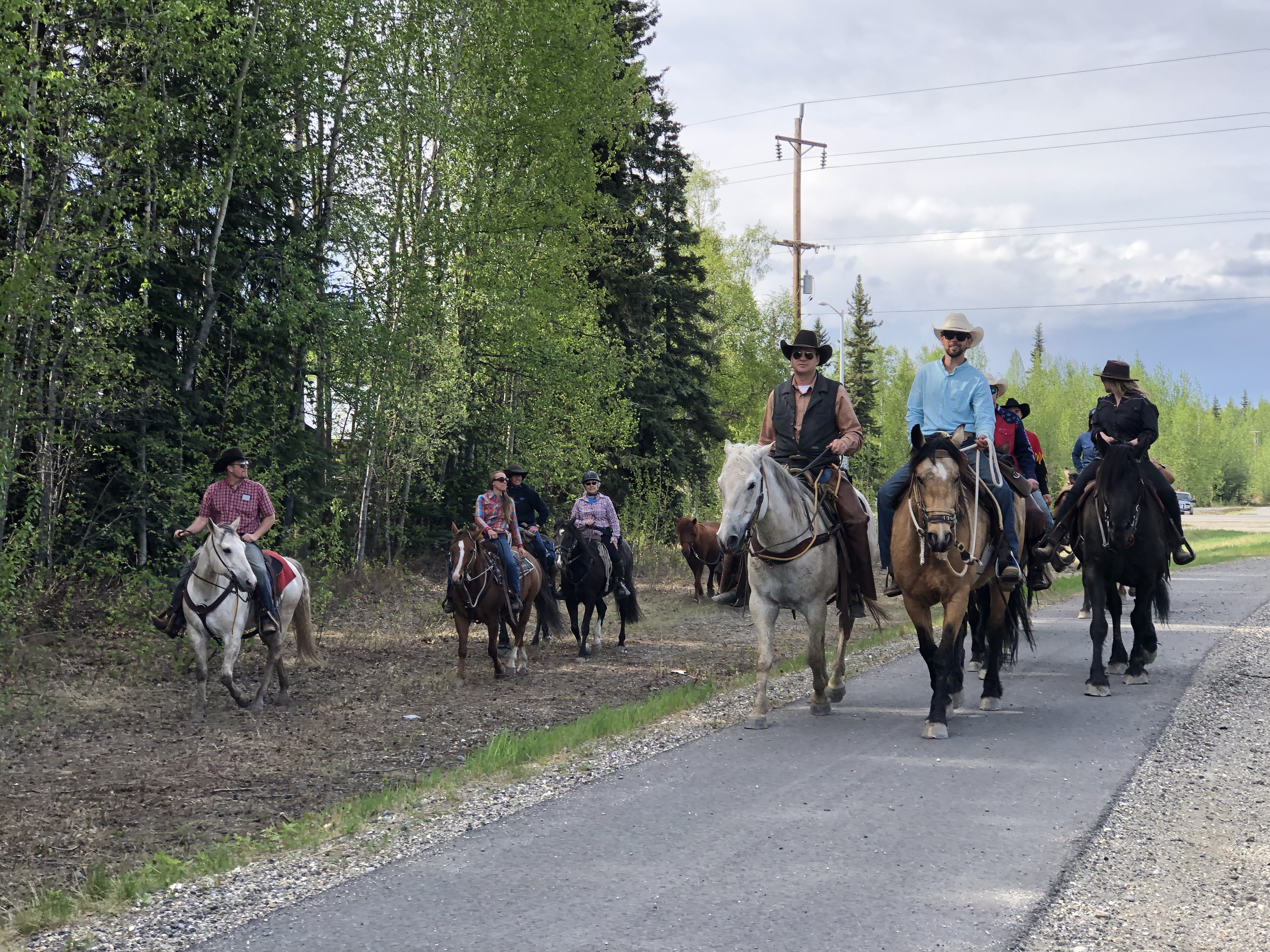The horse is a common language.
In an age where leaders build walls to separate nations, my odyssey crossing the Americas on horseback has taught me that western culture transcends borders.
“Filipe, we are so happy to share this day with you… if it wasn’t for the horse we would have never met,” Johanna Ray, a blonde Canadian cowgirl from Steinbach, Manitoba, said from atop her stunning dun stud.
My departure from Fairbanks, Alaska united horse lovers from different corners of the globe.
Sara Turner, whom I met in Honduras during my first long ride, and her friends—Tara, who is from Ireland, her fiancé, Max, and Cole, who drove for 6 days to trailer my horses to Alaska from British Columbia—rode horses lent by Ray and her husband John. John was also there with his brother, two real cowboys from Oregon, sitting atop two quick grey ranch horses. Pete and Alys, originally from California and New York, who now live in Palmer, Alaska, were riding their Icelandic horses. An American veteran, once deployed to Desert Storm and Iraq, sat with a wide smile atop her bay mare. Clara Davel, my Argentinian girlfriend and support driver on this journey, rode a beautiful Friesian horse who’s black hair seemed to glow in the midday sun.
“I can’t believe all of these people came to ride out with you, it’s amazing,” said Davel from atop her tall steed.
We followed a gravel road next to the trans-Alaska pipeline for most part of the day. Considered the world’s largest pipeline system, it can deliver 2 million barrels of oil per day.
“This thing [pipeline] runs from Prudhoe Bay to Valdez… it’s what pays the bill in this state,” said John Ray fixing his brown-felt cowboy hat.
The day ended at a boarding facility in North Pole, a small town 30 kilometers south of Fairbanks. Before Sara Turner left for Anchorage to catch a flight back to Canada, she gave me the horse’s paperwork for crossing the border back into Canada. Along with the paperwork came some troubling news.
“Since Smokey and Mac are Canadian horses and in transit in Alaska, you will have to cross the border back into Canada within a month of when their blood was taken for the Coggins exam,” said Turner while I read through the paperwork.
Looking at the date the blood was drawn—May 7, 2019—I swallowed with a dry mouth as I counted dates and kilometers in my head. It was May 17. Fairbanks sits 503 kilometers from the Yukon border.
“I have to ride 500 kilometers in 20 days,” I said in what sounded more like a question than a statement.
Once again, those imaginary lines drawn by men long ago would make my life in the saddle much harder than it needed to be. And like before, I would have to cowboy up and ride hard.

